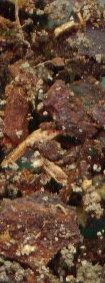Dirt
Today, let's play in the dirt. The University of Houston's College of Engineering presents this series about the machines that make our civilization run, and the people whose ingenuity created them.
When William Bryant Logan was working on his recent book, he spoke to an ecologist about it. The fellow asked what the book would be about. "Dirt," Logan replied. "You mean soil," said the ecologist. "No," said Logan, "I mean dirt."

What Logan does in his book Dirt can't be done in some polite drawing room. Dirt, says Logan is what rings the collar of a two-day-old shirt. It is "the stuff kids play in, the kind of road that begins where the pavement ends." It is where seeds germinate, and organic matter comes to rest. But the word dirt sounds so Anglo-Saxon. It is a strong, pungent, and upsetting word.
And so Logan subtitles his book, The Ecstatic Skin of the Earth, and he sets out, through a set of essays, to celebrate this indefinable substance out of which we all have our being. Dirt is our chemical reprocessor. It bears our weight and carries our water. It moves and shifts. It can adapt to us or strike back.
 Logan begins by asking us to think about humus -- that great organic stew vat in which life is continuously returned to us. He quotes recipes for compost given by John Adams, our second president. In England, Adams looked at someone's compost pile and said proudly, "This may be good manure, but it is not equal to mine."
Logan begins by asking us to think about humus -- that great organic stew vat in which life is continuously returned to us. He quotes recipes for compost given by John Adams, our second president. In England, Adams looked at someone's compost pile and said proudly, "This may be good manure, but it is not equal to mine."
Each of Logan's essays is a small gem. We learn about the sensory apparatus of earthworms, about clay, about groundwater. We revisit an ancient question: "Why, when we put victims of contagious diseases into the ground, do they not poison the earth?" The ninth-century Persian physician Rhazes asked that question.
So did Francis Bacon, and even Walt Whitman. Each gave what was essentially the correct answer. Whitman put it this way:
It distills such exquisite winds out of such infused fetor.
Logan goes on to describe the mechanics of decomposition -- how we're reprocessed and cleansed within our graves. Then, he adds, we poison the sacred ground of cemeteries with formaldehyde in our effort to obstruct those processes.
In another surprising chapter, we learn how dust-storms redistribute the wealth of soil. The Brazilian rainforest grows in ground fed by dust that came across the Atlantic from the Sahara region. Depression-era dust-storms in our Midwest have greatly enriched the soil of southern Canada.
I once visited a village outside New Delhi, India. Small clay houses set in brown dirt. A life without waste; everything used up. Children and animals played in dirt crisscrossed with drainage ditches. The right disease could've meant catastrophe. But as long as the organic matrix stayed in equilibrium, it was okay.
The lives of those careful and clean people, based upon an uncanny intimacy with dirt, were little different from yours and mine. Our life-support systems may keep dirt out of our line of sight, but make no mistake: dirt remains our common denominator.
I'm John Lienhard, at the University of Houston, where we're interested in the way inventive minds work.
(Theme music)
Logan, W. B., Dirt: The Ecstatic Skin of the Earth. New York: Riverhead Books, 1995.
I am grateful to Margaret Culbertson, UH Art & Architecture Library, for providing me with Logan's remarkable book.
This episode is also reprinted in the KUHF Radio Guide, April, 2001, p. 39.
